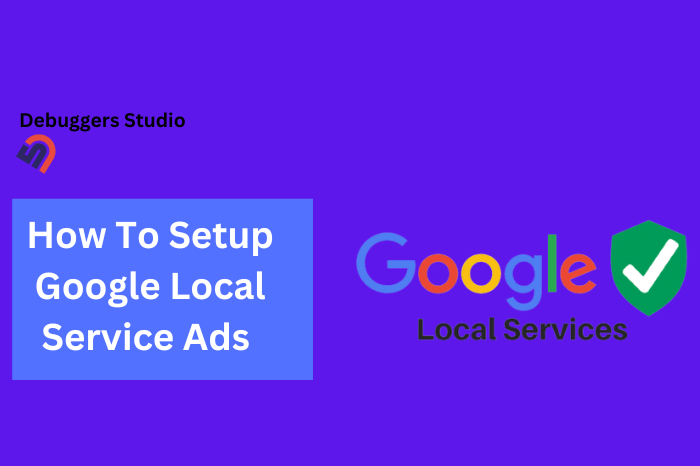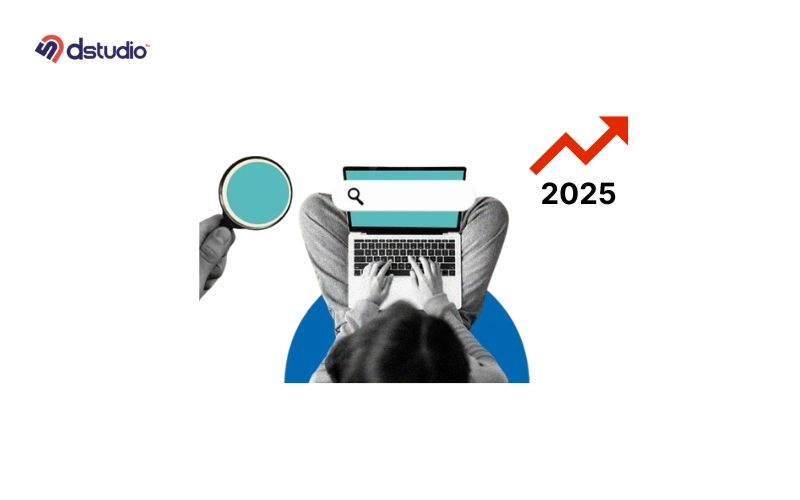Ever stare at your website, eyes wide with wonder, and think, “Why am I buried on page 17?
Is the internet even aware I exist?” Don’t worry, friend, we’ve all been there. Climbing the Google ladder can feel like – daunting, confusing, and filled with enough technical jargon to make your head spin.
But fear not! In this guide we’ll share the secrets, the SEO geeks don’t want you to know. Also guide you, step-by-step, to conquer the SERPs (that’s Search Engine Results Pages) and land your website in the coveted first-page spotlight.
Understanding how Google ranks websites
Google is constantly updating and it’s ranking algorithm is shrouded in secrecy, but it is clear that various factors contribute to the positioning of a website.
Here’s a detailed breakdown of the Google ranking algorithm:
Core Ranking Factors:
1. Relevance:
- Keyword matching: Google analyzes the content and code of your website to see how well it matches the user’s search query. This includes both exact keyword matches and semantically related terms.
- Entity recognition: Google understands entities (people, places, things) and their relationships within your content. This helps determine the overall context and relevance to the user’s search intent.
- Query understanding: Google goes beyond just keywords and tries to understand the user’s underlying intent behind the search. This allows it to sort content that best satisfies that need, even if it doesn’t directly match the keywords.
2. Authority & Trustworthiness:
- Backlinks: Links from other websites, especially high-quality and relevant ones, act as votes of confidence for your website. The more authoritative the linking site, the stronger the signal to Google.
- Domain age, history, and reputation: Older websites with a consistent track record of quality content build trust with Google and users.
- Brand signals: Google considers brand mentions, social media presence, and offline reputation to gauge your website’s authority and trustworthiness.
3. User Experience & Engagement:
- Click-through rate (CTR): Google monitors how often users click on your website in search results. A higher CTR indicates that your website is relevant and engaging to users.
- Dwell time: The amount of time users spend on your website after clicking through can signal the quality and relevance of your content.
- Mobile-friendliness: Google prioritizes websites that offer a smooth and optimized experience on mobile devices.
- Technical factors: Website loading speed, page structure, and internal linking all contribute to a positive user experience and can impact positioning.
Additional Ranking Signals:
- Local search factors: For location-based searches, Google considers factors like distance, user reviews, and local citations to rank relevant businesses.
- Personalization: Google personalizes search results based on user location, search history, and other signals. This means your positioning may vary depending on the individual user.
- Freshness: Google values fresh content that addresses current trends and updates. Regularly publishing new and relevant content can improve your position in google search results.
Algorithmic Updates & Black Box Nature:
It’s important to remember that Google’s ranking algorithm is complex and constantly evolving. While we know the key factors listed above, the exact weights and sub-factors remain a closely guarded secret. This black-box nature makes search engine optimization a dynamic field requiring constant adaptation and experimentation.
Investing in affordable SEO packages can be the most cost-effective way to secure first-page rankings.
To appear on the first page of Google, follow the instructions below.
1. Align your page with user’s search intent
Reaching Google’s first page isn’t a guessing game, it’s about understanding your audience. Think of it like reading minds. Google wants to show users the best answers, so you need to match their Intension. Unfortunately, it’s really hard to know exactly what searcher are looking for when they search.
But analyzing pages with prominent positions can help you out. Look at their type , format, and angle.
Content Type
Let’s explore the types of content Google loves to promote on the first page :
- Blog posts: Articles providing information on specific topics
- Interactive tools: Tools that allow users to interact with the website
- Videos: Visual content explaining or demonstrating something
- Product pages: Pages dedicated to products listed on the website
- Category pages: Pages grouping similar products together
Choosing the right type of content is important as it determines how well a page can address the searcher’s intent, which could be informational, navigational or transactional.
Blog posts
A blog post is a brief, casual article on a website, that shares information, opinions, or stories on a specific topic relevant to your business.
When creating blog posts for a business website, it’s essential that they meet the expectations of people who arrive via organic SEO tactics like Google searches.
Interactive tools
Interactive web solutions are used to encourage audience participation and build their loyalty. Websites need to have interactive tools that are designed to keep visitors engaged. Examples of these tools include quizzes, calculators, games, and surveys, which help make websites more user-friendly, relevant, and interesting.
Videos
Visual content has become an integral part of marketing strategies, and videos are no exception to it. Videos can have a significant impact on audience engagement, and if done well, they can boost your website’s search engine rankings. In terms of search intent, video content aims to inform or educate, rather than persuade or convince.
When creating video content for your website, you must consider your target audience’s preferences and interests.
For example, tutorial videos on how to use a product or service may appeal to customers who want to learn more about it before making a purchase.
On the other hand, videos that showcase the features and benefits of a product may be ideal for those in later stages of the buying cycle.
If you want to rank your videos high on Google searches, you should optimize their metadata such as titles, descriptions and tags. Including relevant keywords in video titles is especially important since people are likely to click on the ones that capture their attention while also containing information about what they are looking for.
Content Format
In the context of website ranking, ‘Content format’ refers to the type of content a webpage contains. This mainly relates to blog posts.
- Step-by-step Tutorials: A comprehensive guide in series of steps
- Listicles: Information presented in a list format for easy reading
- Opinion Pieces: Views or personal opinions on any subject
- Reviews: Assessments shared by customers or experts about products and services
- Comparisons (e.g., x vs. y): Content that compares two items, highlighting their differences and similarities.
As an example, when you search for “how to get on the first page of Google,” most of the results you’ll see are step-by-step tutorials based on the titles of the pages.

for “best seo tools” the majority of the results are in the form of list articles.
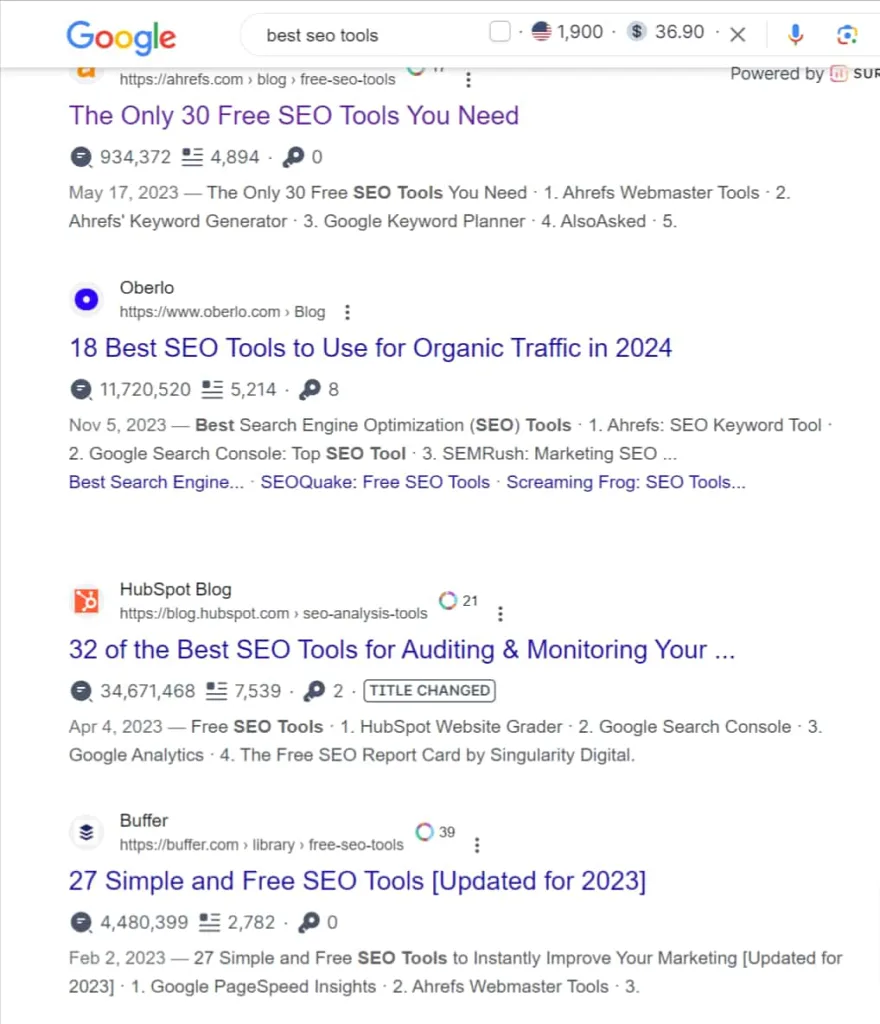
Content Angle
To improve the positioning of a website, it is important to think about the “Content angle” that not only focuses on the main purpose of the website but also matches what people are searching for. This involves creating content that connects with potential customers and provides answers to their questions as they make decisions.
It is more difficult to measure than the type and format, but it is essentially the most common unique selling point.
For instance, nearly all of the top search results on the first page for “best savings account” include the year 2023 in their titles.

This shows that people who are searching want to find up-to-date information.
2. Cover everything searchers want to know or expect to see
Simply having content that somewhat matches what people are searching for is not sufficient. It must also include all the information or expectations that searchers may have.
For instance, if you search for “mens sneakers” and look at the results on the first page, you will find that each one includes filter for selecting the shoe size, color and brand.
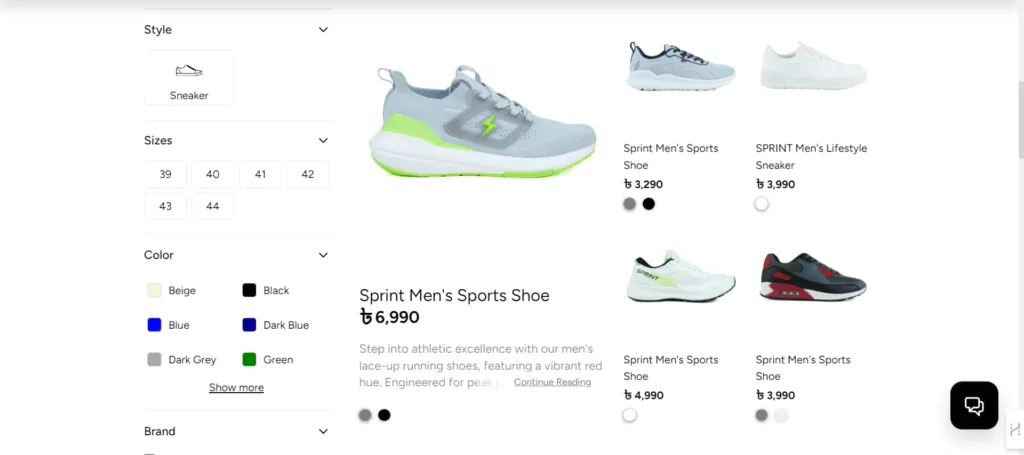
This is because people who are searching for shoes will naturally want to find ones that fit them properly.
Strategies to find what searchers are maybe expecting to see
Here are some methods to determine the information that users may anticipate finding on your webpage:
Look for commonalities among first-page results :
Examining the first page results to find similarities is an important technique to boost a website’s position on Google. By noticing patterns in the highest-ranked pages, you can discover ways to optimize your own content and make it more relevant.
Look for common keyword mentions on first-page results :
The strategy of looking for common keyword mentions on first-page results can help identify the most important keywords for a topic. This analysis can help better optimize your website content and help to rank high on Google.
By examining the top 10 search results for a particular keyword, you can observe how often different keywords are used in those pages’ content, titles, and metadata. This analysis will reveal which words people associate with that topic and which keywords you should target for optimal visibility.
To perform this analysis effectively, it is important to use reliable SEO tools that have access to Google’s search engine data. Such tools allow you to extract information about organic search traffic and identify relevant keywords for your website.
Look for common keyword rankings among first-page results :
Analyzing common keyword rankings among the first-page search results is a crucial strategy to enhance website ranking on Google. Here’s how it works:
- Study the search results carefully and compare them with your content to identify gaps and plan to address them
- Look for specific keywords that are commonly ranked on the first page by several websites
- Create high-quality, optimized content that addresses those keywords
- Ensure that your content surpasses competitors in terms of quality and relevance
- Include informative data and statistics that add value to readers
- Analyze the impact of your optimization efforts regularly to refine strategies continuously
Get your signals straight and mention those keywords in your URL, title tag, and H1 tag for optimal on-page optimization.
3. Optimization of on-page signals
When it comes to optimizing a website for search engines, focusing on on-page signals is key. This involves a variety of techniques. So, let’s take a closer look at each of these on-page signals to understand how they can improve your website’s ranking.
Mentioning keyword in URL
Including the targeted keywords in the URL structure of a webpage is an important on-page signal to enhance search engine ranking. The target keywords included in the URL should be short, descriptive and relevant to the content available on the page.
For example, the target keyword for this post is “how to rank website on google first page” and the URL is “how-to-rank-website-on-google-first-page”
Mentioning keyword in title tag
A title tag is a small piece of code in HTML that is used to enclose the page title.
Besides having the keyword in title tags, it is also essential to keep them short, descriptive and relevant to search intent.
Remember that using too many keywords or using ones that aren’t related could actually hurt your website’s ranking instead of helping it. The best way to approach choosing keywords is to focus on ones that are relevant and stick to them when creating content.
A true fact: According to Moz, optimizing on-page factors like title tags has a 15-20% impact on search ranking factors.
Wrapping visible page title in an H1 tag
Using the most important HTML tag, a visible page title can be wrapped in an H1 tag to optimize on-page signals. This helps Google understand the main topic of the page and its relevance to search queries.
Some websites use multiple H1 tags on a single page, it is best practice to use only one per page per specific topic. This avoids confusing search engines and ensures that they accurately interpret and rank pages based on their content.
Pro Tip: Ensure that your website’s overall structure is well-organized with logical hierarchies of headings – from H1s at the top level down through subsequent subheadings (H2s, H3s, etc.) – that clearly communicate the hierarchy of information on each webpage.
Showcase the authors profile
Google aims to prioritize content created by knowledgeable individuals. To achieve this, Google recommends the following strategies:
- Clearly cite sources to support your claims.
- Include relevant background information about the author to establish credibility.
- Ensure that the content is accurate and devoid of easily verifiable factual mistakes.
4. Add LSI Keywords
LSI keywords are an advanced technique used in on-page SEO to improve website rankings. Right now, they are proving to be highly effective. But what exactly are LSI keywords?
LSI keywords refer to words and phrases that are closely related to the main topic of your webpage. For instance, if your keyword is “Best SEO tool,” some LSI keywords could include phrases like “SEO tool,” “keyword research,” or “search engine .”
By incorporating LSI keywords into your content, you help Google understand the main theme of your webpage. This, in turn, increases the chances of your webpage ranking higher in search results.
To discover and utilize LSI keywords on your website, you can make use of a helpful SEO tool called LSIGraph, which is available for free.
5. Internal Linking
Internal links are links within your website that connect one page to another. Having more of these links on a page can increase its PageRank (PR), which is important because Google still considers PR when ranking webpages.
Now, let’s explore a free method for discovering relevant internal linking possibilities.
- Choose Your Topic: Select a subject that is related to your website, such as “vegan desserts.”
- Search Your Site: Use Google and enter your topic along with “site:yourwebsite.com” to find relevant pages within your website. For example, search “vegan desserts site: yourwebsite.com.“
- Discover Valuable Links: Look for pages that:
- Provide more in-depth information (e.g., “Easy Vegan Cookies” found under the section “Vegan Desserts”).
- Offer a different perspective or approach (e.g., “Healthy Baking Swaps” from the section “Vegan Desserts”).
- Expand the conversation beyond your initial topic (e.g., “Plant-Based Protein” from the section “Vegan Burgers”).
4. Establish Connections: Visit those pages and include natural links that direct readers back to your main topic page or other relevant content. Use clear text for the clickable links, such as “Check out these 3 Easy Vegan Cookies!”
5. Repeat and Expand: Continue exploring new topics, creating natural links, and witness the growth and success of your website.
6. Backlinks
Backlinks, also known as inbound links, are crucial for boosting your website’s trust and credibility in search engines. They act as votes from other websites, stating that your site has quality content.
The number of backlinks you need is not fixed; it varies based on your competition and industry norms. Top-ranking sites typically have thousands of backlinks, but focusing on the quality over quantity is vital.
You can get backlinks primarily through guest blogging, creating engaging and shareable content, or by using link-building tools.
7. Competitor Analysis
This is a great strategy for improving your website’s visibility on the first page of search results. When you search for your chosen keywords, take note of the pages that rank higher than yours.
What strategies are they employing that set them apart from you, and how can you improve your content to effectively compete with them? They may be incorporating a wider array of relevant keywords into their content.
Also, they could be implementing a more effective internal linking strategy or producing longer articles that comprehensively address the queries people have during their searches.
The idea is to learn from their methods and use them to convince Google that your content deserves to be at the top.
8. Ensure Consistent Monitoring and Analyze your key metrics
Google Search Console is a helpful tool for website owners to keep track of their SEO strategies.
You can use the search analytics function to see which search queries are bringing people to your site and check out other metrics related to your visits. This information can help you improve your content and make better efforts in the future.
For example, if you notice that a specific long-tail keyword is getting a lot of views but not many clicks. It could mean that your title tag and meta description need improvement. Make sure to regularly review your data and fix any issues you find.
9. Take Advantage of Content Gaps
To improve your brand’s online visibility, it’s important to keep an eye on your competitors and learn from them. However, that’s not enough for brand owners who are serious about getting their website on the first page of search results.
You should also analyze the search results for the keywords you are targeting to find any gaps in content and opportunities that your competitors might be missing out on.
Do your customers have specific questions or concerns that need to be addressed? Create a content strategy to fill those gaps and improve your chances of appearing at the top of search results for relevant keywords. This will also help you qualify for features like rich snippets and more.
10. Set a regular Content Schedule and perform content audits
Fresh, relevant content is your key to rank higher on SERP. Think of it as building a library for your website – engaging, informative resources Google and visitors love.
Set a consistent publishing schedule, like publishing once a week, and stick to it. This shows Google you’re an active, reliable source. Also perform regular content audits.
Analyze each page’s performance, update outdated info, and remove anything irrelevant.
11. Reduce Bounce Rates
Our next goal is to decrease the Bounce Rate of your website.
Why is this important?
Well, it’s not good for Google to see people quickly leaving your site and going back to the search results. This tells Google that people are not satisfied with your site. And if users aren’t happy, your rankings will suffer.
A high amount of pogo sticking shows that your content is not good and your ranking will drop. Of course, aligning your content with what people are searching for is a great way to improve your bounce rate. After all, if you give searchers what they want, why would they leave?
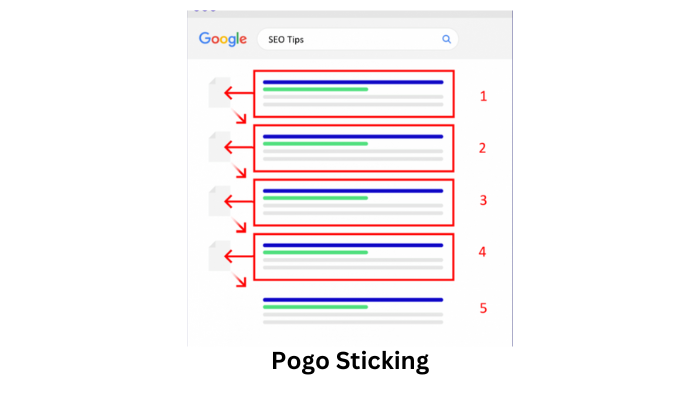
Besides meeting Search Intent, there are a few simple things you can do to improve your site’s bounce rate.
First, I suggest looking at the section of your site that appears when people first land on it. In my experience, people decide whether to stay or leave based on what they see here.
The number one thing you can do to improve the above the fold section is to prioritize your content. This way, Google searchers can easily find what they’re looking for.
You also want to organize your page in a way that makes it easy for people to find what they need. For instance, you may have noticed a section called “table of content” at the top of certain pages. This allows people to jump directly to the step they’re most interested in.
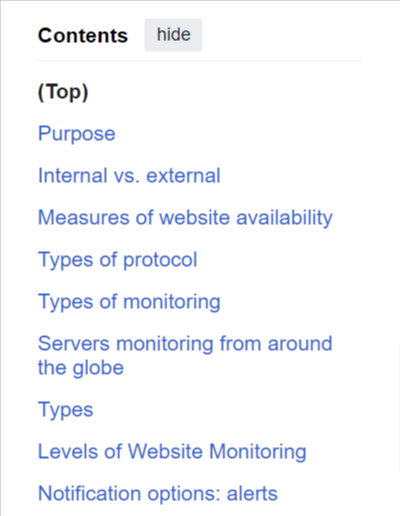
Lastly, adding visuals, videos, charts, screenshots, selfies, or any other form of visual content to your page can make it more engaging and easier to understand. Both of these can significantly decrease your bounce rate.
In conclusion, ranking first page of google in 2024 requires a strategic approach. Focus on quality content, optimize for user experience, and leverage relevant keywords. Embrace emerging SEO trends and regularly update your website.
Articles you may also find useful:
FAQ
What are the most common content types on the front page of Google?
The most common content types on the first page of Google include blog posts, interactive tools, videos, product pages, and category pages.
How can I determine the content format that ranks the highest on Google first page?
If you’re mainly seeing blog posts on the first page, you should check which of these formats appears the most: step-by-step tutorials, listicles, opinion pieces, reviews, or comparisons. You can tell from the page titles which format is dominant.
What is content angle and how does it affect my website’s Google ranking?
Content angle refers to the most common unique selling proposition. This is harder to quantify than content type and format, but it’s important to cover everything searchers want to know or expect to see. For example, almost all first-page results for “best savings account” have 2023 in their titles, indicating that searchers are looking for fresh information.
What are some ways to find what searchers may be expecting to see covered on my page?
You can look for commonalities among first-page results by opening and eyeballing the pages that rank. You can also look for common keyword mentions or rankings among first-page results using tool like Ahrefs’ Keywords Explorer. Another way is to use the Content Gap tool in Ahrefs’ Site Explorer to see common keyword rankings for specific top-ranking pages.
What is on-page SEO and how can I improve it to rank higher on Google?
On-page SEO includes all signals on the page itself that Google uses to help decide if it should rank. Most on-page signals are only small ranking factors, but they are worth optimizing as they are quick to change and fully within your control. You can start by mentioning your target keyword in the URL, title tag, and visible page title wrapped in an H1 tag.
What is the purpose of google my business / Google Business Profile?
Google Business Profile allows you to showcase your business address, contact details and opening & closing time on Google Maps and in local search results.
What is Google Analytics used for?
Google Analytics is a tool that tracks and analyzes website traffic. It provides valuable information to businesses by revealing insights about customer behavior, user experience, and online content.

